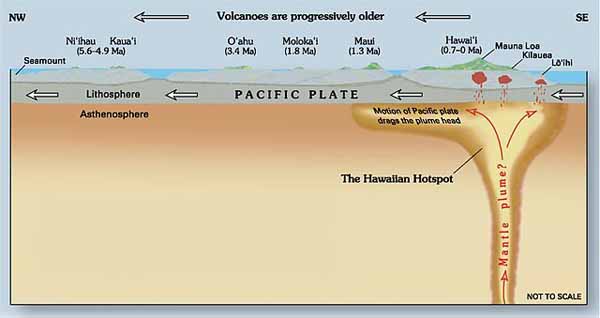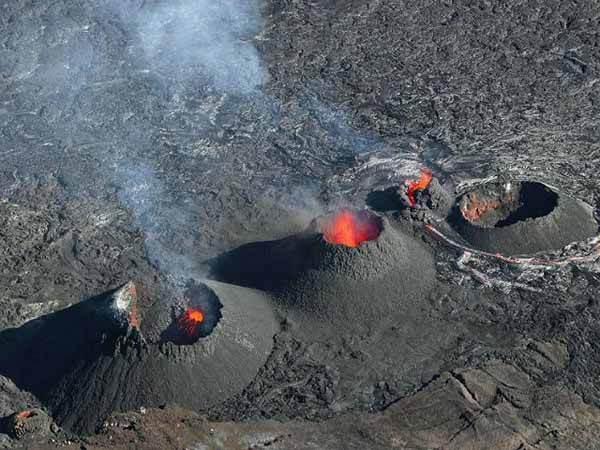Shield volcano 1640 m / 5,381 ft
Isabela Island, Galapagos Islands (Ecuador), -0.92°S / -91.41°W
Cerro Azul volcano eruptions: 1850, 1932, 1940, 1943, 1948, 1949(?), 1951, 1959, 1968(?), 1979, 1998, 2008
Cerro Azul volcano a basaltic shield volcano on the SW part of Isabela Island in the Galápagos Islands. It has the same name as Cerro Azul volcano in Chile, meaning “Blue Mountain” in Spanish.
Cerro Azul is one of the most active volcanoes of the Galapagos hot spot.
Cerro Azul, 1640 m high and the second highest peak of the Galápagos archipelago, is a typical shield volcano located at the SW tip of Isabela Island. It is one of the most active volcanoes of the Galapagos, although historic records from its activity only dates back to 1932.
As most of the other shield volcanoes on the Galapagos island, it has a steep-walled 4 x 5 km nested summit caldera, one of the smallest diameter, but at 650 m one of the deepest in the Galápagos Islands. Young lava lows cover most of the floor of the caldera, where temporary lava lakes are sometimes present during summit eruptions. Numerous spatter cones from lateral fissure eruptions dot the western flanks of the volcano.


